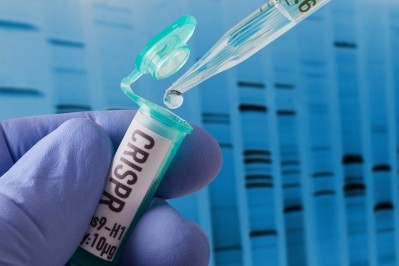ReciBioPharm: Enhancing gene therapies through flexible AAV platforms

Liu outlines the key considerations for developing an AAV platform to ensure process scalability, emphasising the requirement for a holistic approach that provides seamless delivery for patients now and in the future.
BPR: What is driving AAV therapy developers and manufacturers to rely on production platforms?
The gene therapy market is growing rapidly, with 2,111 gene therapies (including genetically modified cell therapies) currently in the development pipeline. As the biopharma industry continues to realise the potential of gene therapies in the treatment of a wide variety of diseases, the global gene therapy market is predicted to grow rapidly, reaching a value of $23.9 billion by 2028.
However, delivering these innovative therapies to the patients who need them comes with many complexities. Like all medicines, gene therapies need to be available, reliable and affordable. Although gene therapies have repeatedly shown efficacy in treating various conditions, their price is often a significant barrier. Offering hope to patients suffering from haemophilia B, the most expensive therapy in the world is gene therapy Hemgenix, with an average one-time cost of $3.5 million.
Effectively delivering gene therapies therefore requires drug developers and manufacturers to balance the need to safeguard quality and ensure cost-effectiveness and accelerated timelines to provide patients with faster access to critical medicines. As a result, AAV therapy developers are increasingly looking to contract development and manufacturing organisations (CDMOs) that can provide robust platforms developed with these factors built into the production process.
BPR: How are platform approaches helping to overcome the complexity of AAV development and manufacturing?
Although the gene therapy space has expanded rapidly since the first approval in 1990, there is still no standard procedure for the development and manufacturing of these therapies. There are many complexities in AAV production and they vary on a case-by-case basis.
AAV manufacturing has many steps, from plasmid production and transient transfection or infection to upstream processing, downstream processing, and fill and finish. The upstream processes and conditions needed will vary depending on the virus’ characteristics and factors such as the cell lines, transfection reagents and culture medium used. Decisions made in upstream processing will subsequently impact the chosen methods for downstream processing. Each of these processes will also need to be optimised to ensure quality and safety, with scalability and cost being additional considerations. As a result, there is a need for a holistic understanding of how each decision could affect subsequent processes and future scaling.
With so many complexities associated with AAV therapy manufacturing, relying on an established platform can help simplify production. By developing an AAV platform that can be adapted and optimised to support the production of a wide variety of different AAV therapies, CDMOs help to accelerate manufacturing, reduce costs and offer a clear path to clinical phases and commercialisation.
BPR: Why is it important to build flexibility into an AAV platform?
For a CDMO to effectively support AAV manufacturing, it must provide flexibility not only to optimise conditions and processes for the viral vector itself but also to account for any development work that has already been conducted.
As previously mentioned, every AAV project is different, targeting different diseases using viral vectors with distinct characteristics. Having a rigid platform that doesn’t allow for deviation can limit what is achievable for each project. By providing flexibility, CDMOs can adopt the technologies, cell lines and processes necessary to deliver the highest yield, quality, safety and efficacy possible for each therapy.
Having flexibility built into an AAV platform also allows CDMOs to provide more options to ensure project needs are met. This is particularly important when considering the high cost of AAV gene therapy manufacturing. Enabling AAV developers to use their preferred reagents or cell lines rather than staying strictly with a predetermined option can help to keep costs down.
As a critical part of an AAV platform, analytical development should also provide the flexibility to meet the individual needs of each project. CDMOs can help to accelerate development while meeting the project’s needs by offering an established analytical panel to assess AAV critical quality attributes (CQAs) corresponding to potency, purity, safety, stability and identity that can be adapted and optimised to each therapy.
Providing this flexibility requires CDMOs to have extensive expertise across a wide range of different viral vectors with an in-depth understanding of the needs and complexities of each project. Leveraging past experience, these CDMOs can identify potential risks throughout platform development and provide effective solutions.
BPR: When developing an AAV platform, what steps must be taken to ensure success as projects scale?
Every AAV project will have unique needs that will change as the project progresses from preclinical stages to clinical phases and commercialisation. The chosen processes must therefore be able to produce a consistent product as manufacturing scales at each step.
A robust AAV platform is integral to ensuring project scalability and will require developers and manufacturers to adopt a holistic approach to platform development from the onset, carefully considering how the project’s needs will evolve.
Developing a robust AAV platform will involve process development starting from small-scale screening of different cell lines, reagents and methods, and determining the process parameters. Conditions can then be optimised with a design of experiments (DoE) methodology, aiming to achieve high yield and quality while minimising cost. After demonstrating that the process is scalable and consistent when scaling up to bench-top scale (using bioreactors), the project can then progress to pilot-scale production.
BPR: How can AAV platform development help to minimise risk?
Biotechs with AAV assets are under pressure to deliver effective and safe therapies to patients quickly, not only to demonstrate the potential for return on investment to investors but to change patients’ lives quicker. The inherent complexity of AAV therapy development and manufacturing naturally brings risk and the potential for poor decision-making to result in delays to critical milestones.
A holistic approach to AAV platform development is critical for developers and manufacturers to recognise potential risks that could arise early in the project, allowing them to proactively implement solutions. Adopting a holistic approach in the development of an AAV platform relies on an in-depth understanding of each part of the process while also having the flexibility to adjust processes when needed.
CDMOs with extensive experience supporting a wide range of virotherapy projects will be aware of the needs of different project modalities and have an intimate knowledge of how these could change as they progress towards commercialisation. By conducting early feasibility studies considering all of the critical aspects of a proposed project, CDMOs can help to determine the likelihood of success before the project progresses to later stages requiring engineering and GMP runs. As a result, any issues can be pre-empted and mitigated before reaching later stages, where making changes could be costly and time-consuming.
With regulatory expertise, these CDMOs will also be able to foresee changes that must be made to ensure compliance with stringent regulatory requirements.
BPR: In the rapidly evolving gene therapy space, how can AAV platform developers prepare for future advancements?
The gene therapy space has changed dramatically following the approval of the first gene therapy 30 years ago, with 30 more treatments having been approved since then. During this time, methodologies and technologies have quickly advanced, enabling gene therapy developers to achieve higher viral vector yields, better quality and more effective project scaling. As the space has evolved, regulatory bodies have also adapted guidelines to reflect advancements.
To continue providing cutting-edge therapies to patients, it is critical that gene therapy platforms, including those for AAV production, are developed with the flexibility needed to integrate new technologies and advancements and meet changing regulatory requirements. These advancements will include automation, new digitized technologies and artificial intelligence.
AAV platform developers will therefore need to stay at the forefront of innovation, with the expertise required to look ahead to determine the best technologies for supporting new therapies while maintaining regulatory compliance.
With flexibility in viral vector platforms, there is also the potential to support viral vector therapies using virus types other than AAV. Although an estimated 82% of the gene therapies in development use AAV vectors, the number of projects relying on alternative virus types such as lentivirus and baculovirus is steadily growing.
To continue delivering innovative new gene therapies to patients in the future, CDMOs need to be able to support not only AAV but a wide variety of different virus types. This will necessitate broad expertise and experience as well as platform flexibility.
















